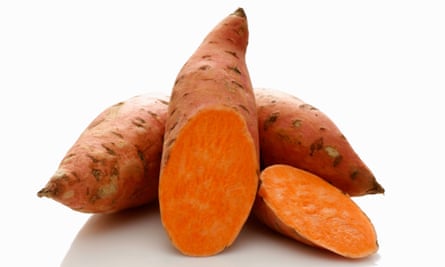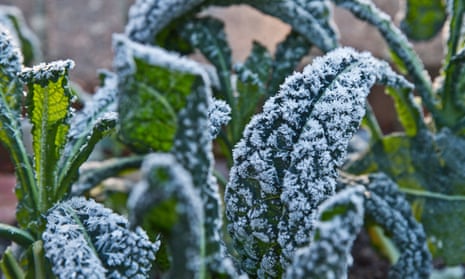Frost is often the vegetable grower’s nemesis. It’s a constant cause of nervousness for me as I plant out tomatoes and peppers each spring, not to mention being the meteorological end-of-the-party for pretty much all tender crops come the autumn. And, in London, the first really hard frost tends to strike right about now.
There are some crops for which frost is not the enemy, but positively a bonus, dramatically improving their flavour. Here’s my guide to the crops that frost can benefit, the science of how it works and the ways gardeners can use it to their advantage.
When the temperatures plummet, the water inside plant cells freezes and expands as it turns to ice. This ruptures the rigid wall of fibre that encircles each of the cells that make up the plant’s tissues, causing the building blocks of their physiology to burst.

Plants that are able to survive freezing conditions have evolved ingenious ways to prevent this from happening. In the case of many vegetables, they do this by making their own antifreeze, which lowers the freezing point of the liquid in their cells, and it just so happens that this natural antifreeze is a tasty one.
As sensors in the plant detect the falling temperatures, the plants rapidly ramp up the production of enzymes that break down the starch, normally used as an energy store, into simple sugars. It is the release of these sugars that ups the concentration of solids within their tissues and prevents it from freezing, like salt scattered on to roads, with the side effect of making crops taste sweeter. These sugars also help balance out the flavour of sour or bitter chemicals, resulting in better flavour.
This phenomenon is, unsurprisingly, most dramatic in crops that contain large amounts of starch, and that means root crops (they are storage organs after all) such as parsnips, carrots, beetroot, turnips, swedes and celeriac. Even crops that aren’t technically hardy like sweet potatoes will do the same trick, their tubers protected from the worst of the temperatures by an insulating layer of soil after their top growth has long been obliterated. It is also noticeable in leaf and stem crops like leeks, Brussels sprouts and kale. In fact, even people who normally don’t much like the bitterness of sprouts (like me), find them much more palatable and even delicious after they have been sweetened by a touch of frost.
The one exception to this rule is potatoes. Although the same phenomenon is at play, the excessive sugars and lack of starch cause the tubers to become mushy-textured, and often caramelise as they cook, making for watery, weirdly sweet-tasting mash and overly brown, soggy chips. But in the vast majority of winter veg, frost means a positive flavour boost.
The best thing? You don’t have to do anything to get its benefits other than resisting the temptation to harvest too early, and simply enjoy the added flavour frost can bring.
Email James at james.wong@observer.co.uk or follow him on Twitter @Botanygeek

Comments (…)
Sign in or create your Guardian account to join the discussion